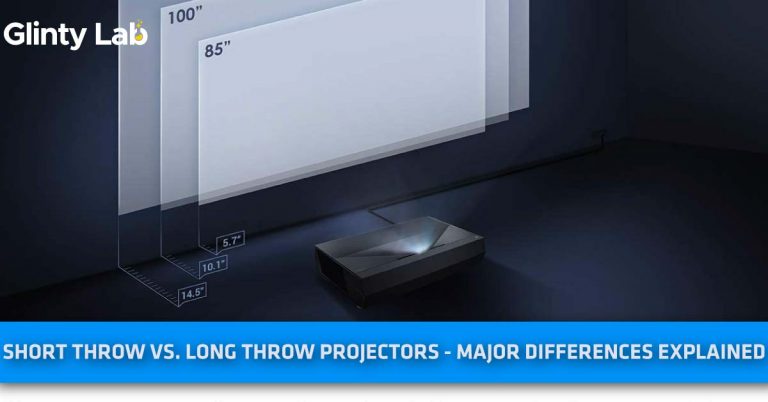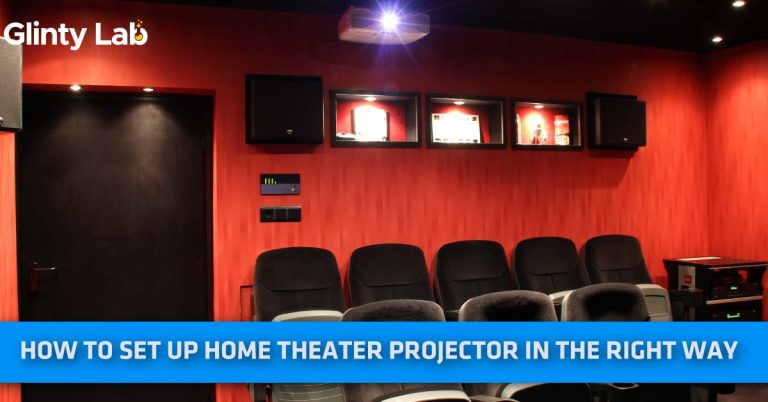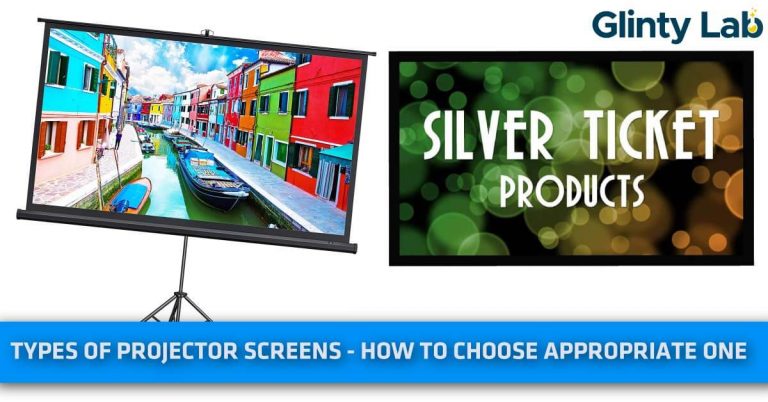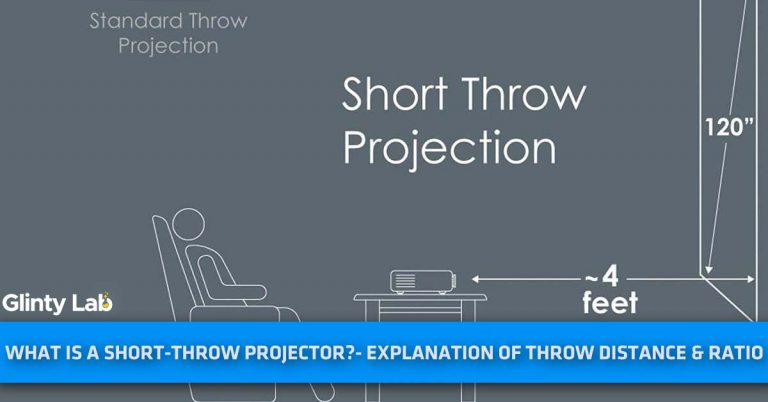Types Of Projectors including DLP, LCD, LED, LCoS, 4k And Many More
No doubt, projectors have become one essential part of everyoneís life including schools, colleges, universities, offices, and even home. Whether itís a work-based presentation, school project, or seminar at university, a projector is the one thatís going to help you to complete your job.
Even if youíre planning to enjoy a theater experience at home, a projector will never disappoint you to provide entertainment within your comfort zone. Intended with different kinds of uses, projectors are divided into many types that weíre going to describe to you.
What Is A Projector?
ìAn optical device that projects a figure or image onto a surface, is known as a projector.î
Basically, it works on the operational principle of image projection where it accepts an image or video input, with the assistance of its built-in optical projection system that processes image through an optical source or lens and then shows enhanced output on the projection screen.
The surface where it projects images usually is a white screen or a wall. They are an alternate of TV or monitors for displaying the picture for a large gathering.
With advanced new technologies, projectors can even display pictures without needing lenses with the help of lasers.
Types Of Projectors

There are several forms in which projectors exist such as multimedia projectors for multiple purposes for conducting classroom lessons, office meetings, conferences, and even for infotainment. Although, different types of projectors are required for different applications such as big-screen projectors for cinema hall or Pico projectors for small places for example a classroom of 15 students will require only a small projector.
The most common types of projectors are DLP, LCD, LED, or CRT but there are also some more types based on the particular application.
Cathode Ray Tube (CRT):
A CRT projector is a video processing device that uses a tiny cathode ray tube having high brightness to generate images. They were invented in the 1950s, processing red, green, and blue parts of the video signals and sent to the individual CRTs to focus images by the lens of the projector to obtain the overall image. But they have been replaced by other modern technologies like DLP projectors, LED projectors, and LCD projectors due to their cost-effectiveness as well as performance.
Advantages:
- Zero Input lag
- Zero Motion blur
- High Resolution
- Excellent Brightness
- Overall superior black level
- Rare bulb replacement
- Long lifespan
Disadvantages:
- They take a long time to set up.
- They are large and heavy in weight as compared to other projectors.
- ANSI brightness is quite less than DLP and LCD projectors.
- They consume energy faster and even higher.
- Geometric distortion and color divergence is common in the,
- Highly prone to burn-in.
- Liquid Crystal Display (LCD)
An advanced technology that is widely being used in modern projectors is LCD technology. LCD projectors consist of three LCD panels and use similar liquid crystal display technology that is commonly used in TVs and monitors. They create images by using multiple steps. They cast images by using three primary colors, red, blue, and green. All of these colors are projected simultaneously to deliver a colored picture will complete details.
LCD Projector: How Does It Work?
A beam of white light is emitted by a light source that passes through three mirrors that are specially shaped to reflect particularly few specific wavelengths of light. Then it passes to an LCD panel that receives electric signals.
Then signal commands for the arrangement of pixels to display the image, and that image produces on three LCD panels but in different colors. These colors combine in a prism to deliver a single-colored image and that image is reflected by the lens to project on screen.
Advantages:
- Highly efficient
- Produces brighter images
- Vibrant colors
- Sharp and focused images
- Render blacks efficiently
Disadvantages:
- Dynamic iris is noisy
- Lacks LED and Laser engine options
- Images often look too much stuff
- Heavy in weight and inconvenient to move at places
- Highly expensive to replace
- Burn out quickly
Uses Of LCD Projector:
LCD projectors are highly useful in:
- Corporate presentations
- Schools
- Home Theaters
- Tradeshows
- Exhibitions
- LED Projector
If you donít want to deal with bulb replacement, LED projectors will be the best option for you. The LEDs installed in projectors have a lifespan of more than 20,000 hours as compared to projectors with bulbs. They use LED lamps as a source of light.
LED Projector: How does It Work?
It works on the process of electroluminescence for the production of light. Electricity passes through a semiconductor material by which LEDs are made of and when electricity passes, it kicks off electrons that are bigger and canít pass.
By shrinking, they give off protons constituting particles of light. In this way, less heat generates while extending the life of the lamp. Their working mechanism is quite similar to DLP and LCD projectors except they have lamps.
Advantages:
- Produces less sound and heat while operating
- Produces a wide array of colors
- They are small in size.
- You can move them conveniently around every corner.
- Takes less time to set up.
- They fail gradually but not suddenly like DLPs and LCDs.
- LED projectors have longer lamp life and low cost for replacements.
Disadvantages:
- Expensive for initial costs.
- They highly depend on ambient temperature.
- Works only under optimum temperature.
- Blue light pollution.
- Always require correct electric polarity.
Uses Of LED Projectors:
LED projectors are used widely just like DLP and LCD projectors but specifically at:
- Dorm rooms
- Conference rooms
- Classroom
- Home Theater
- Digital Light Processing (DLP)
The use of tiny mirrors to reflect light on the screen is the main function of the DLP projector. They include a color wheel that generates sequential colors by spinning. DLPs can be single-chip or three-chip blue, red, and green DLP chips.
DLP projectors are perfect for watching 3D movies. As their mirrors can turn on or off completely, so 3D is free of faint double images that usually happen in LCoS or LCD projectors.
Due to their lower input lag and faster response, they are also good for video gaming.
DLP Projector: How It Works?
There is a chip made of millions of microscopic mirrors in DLP projectors that includes a feature of independent adjustments. They are capable of moving away and towards the source of light for creating dark or light pixels. The color wheel rotates to produce colored images by creating colored pixels on the screen. They mostly operate at a 10x frame rate.
Advantages:
- Delivers vibrant color images with high contrast.
- Sharper images
- Maximum light output
- Minimum light loss
- Deeper blacks
- 3D
Disadvantages:
- Limited placement flexibility
- Ubiquitous rainbow effect
- Lesser brightness as compared to LCDs
- It supports a limited number of pixels.
Uses Of DLP Projectors:
DLP projectors are useful for the following purposes:
- For conducting business conferences
- Home theater display for movies, and TV shows
- Utility companies
- Classrooms
- Launch events.
LCoS Projector:
Liquid Crystal on Silicon or LCoS is a variation of LCD technology. They also work just like LCD projectors by splitting light into blue, green, or red components by directing them into three separate LCD-based imagers.
Behind the line, an array is a shiny surface where light reflects off first instead of passing through LCD cells. White lamps are used in them as a source of light while some use blue laser or yellow phosphor as a light source.
How Does LCoS Projector Work?
LCoS projectors work similar to the DLP projectors but they donít have a spinning color wheel. They have a high resolution as well as price.
Advantages:
- Perfectly high resolution
- Smooth pixel edges
- More natural and life-like images.
- No Rainbow effects
- No eyestrain
Disadvantages:
- The contrast ratio is a bit low.
- Lamp life is limited to 1000-1500 hours only.
- Respond negatively to ambient light.
- Highly expensive replacements.
Uses LCoS Projector:
It is highly useful in optical beam steering, micro projectors. Holographic projectors and a very near-to-eye viewing system.
Checkout the effective Uses Of Projector†
Other Popular Types Of Projectors
4k Projector:
- Including a USB hardware interface, 4K projectors offer 4K resolution that makes them the most sought-after type of projectors.
- They are compatible with Bluetooth, USB, and Wi-Fi connectivity including built-in DLP technology.
- 4K projectors are portable and very light in weight.
- They can be mounted on the ceiling.
- No batteries are required.
- Commonly used as home theater projectors.
Laser Projector:
- Laser projectors offer more contrast as compared to lamp projectors.
- They can run at very low temperatures.
- They require minimum maintenance and deliver true-to-life colors.
- Laser projector creates images and videos by changing the laser beam on the screen
Projector TV:
- Projector TVs can be created by switching your TV with a projector screen.
- Unlike TVs, they are wider screened, have 4K resolution, and have amazing sound effects.
- Smart TV projectors are now available in the market with smart options and voice controls.
- They are highly affordable with great sound effects.
Short Throw Projector:
Ultra-short throw projectors have a wide-angle lens.
- They are very easy to install and can be adjusted just under the screen.
- They canít be mounted on the ceiling.
- But they are highly affordable with HD built to emit laser rays.
Mini Projectors:
- Just as their name shows, mini projectors are miniature versions of normal projectors.
- They are incredibly portable, compact in size, and affordable.
Final Verdict
To narrow down your options for the best projector, make a list of features that are most essential according to your needs. Also, do not forget to check the cost and its effectiveness in relation to accessories like screens, mounts, and lamps.
Once you decide the type of projector suitable for you it would be easier to make a perfect purchase.





![How To Hang Projector Screen From Ceiling? – [DIY]](https://glintylab.com/wp-content/uploads/2021/12/How-To-Hang-Projector-Screen-From-Ceiling-768x402.jpg)
